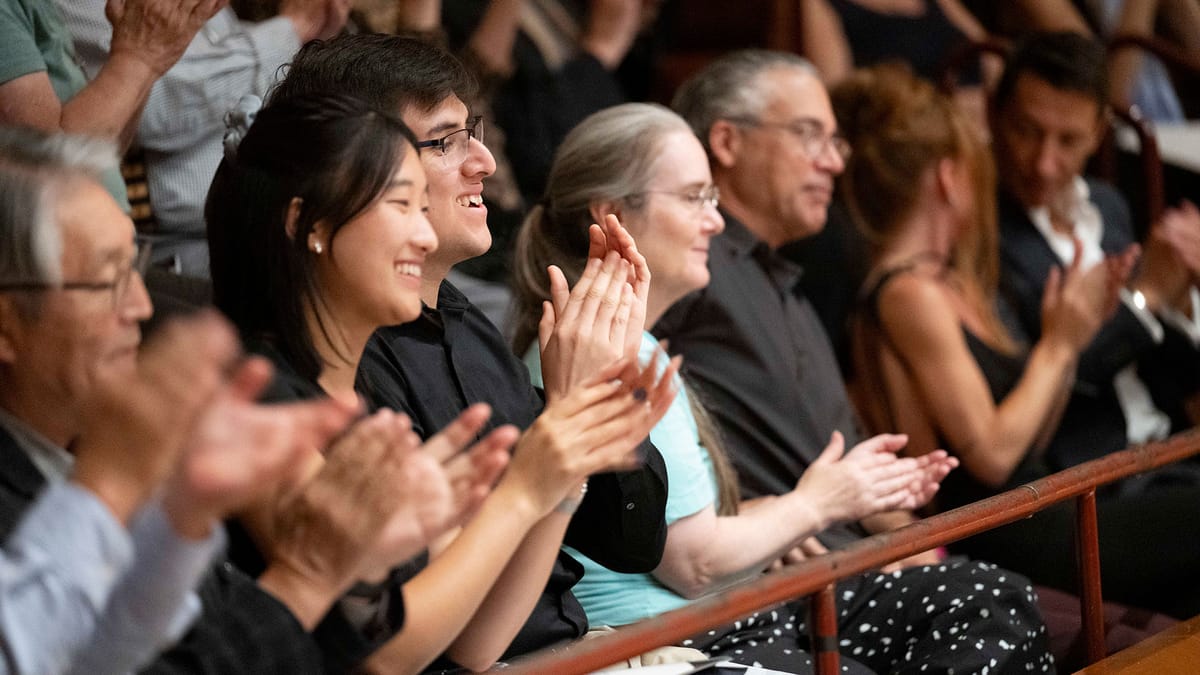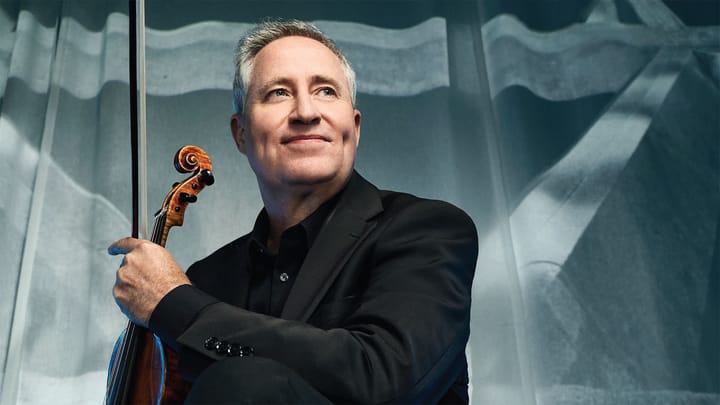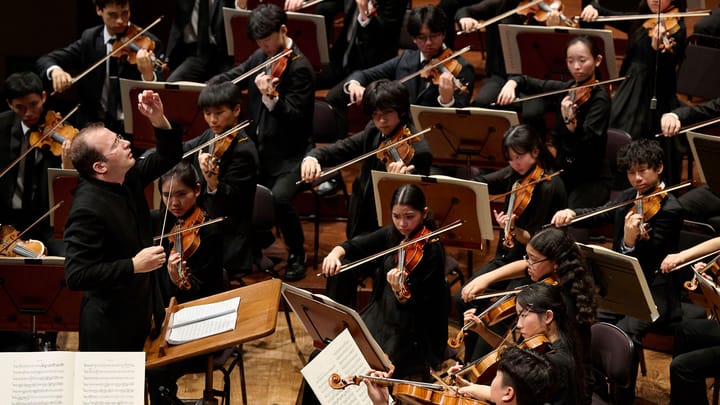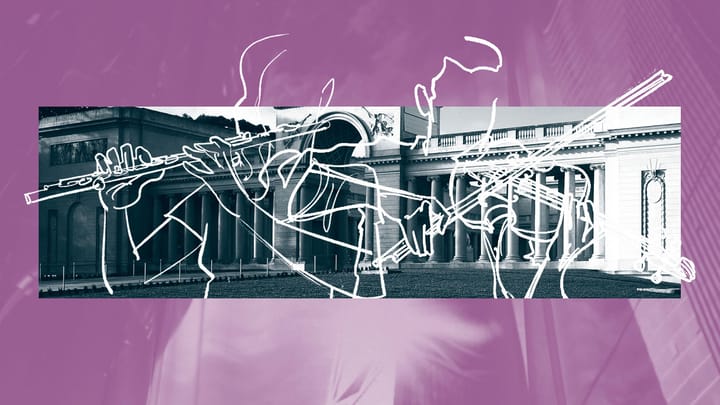In This Program
- The Concert
- About All San Francisco
- Celebrating SCRAP
- At a Glance
- Program Notes
- About the Artists
- Additional Reading
- About San Francisco Symphony
The Concert
Thursday, September 11, 2025, at 7:30pm
Jaap van Zweden conducting
John Adams
Short Ride in a Fast Machine (1986)
Piotr Ilyich Tchaikovsky
Piano Concerto No. 1 in B-flat minor, Opus 23 (1875)
Allegro non troppo e molto maestoso–Allegro con spirito
Andantino semplice–Prestissimo
Allegro con fuoco
Parker Van Ostrand
Intermission
Ottorino Respighi
Pines of Rome (1924)
The Pines of the Villa Borghese
Pines Near a Catacomb
The Pines of the Janiculum
The Pines of the Appian Way
This concert is presented in partnership with

About All San Francisco
When Louise M. Davies Symphony Hall opened in 1980, the San Francisco Symphony inaugurated what has become a beloved tradition: the All San Francisco Concert. This performance for the community, presented in partnership with the San Francisco Arts Commission, is one of the highlights of the Symphony’s season-opening activities, and is dedicated to the Bay Area's many impactful community groups and nonprofit organizations for their invaluable work in enriching our region. This year we are thrilled to welcome thousands of community members to this special concert.
In 2007, the SF Symphony and its partners sought to honor the founder of the All San Francisco Concert, SF Symphony Board member Ellen Magnin Newman, through the creation and sponsorship of the Ellen Magnin Newman Award. This award is now presented annually at the All San Francisco Concert to a Bay Area community-based organization that strengthens the region’s cultural fabric and serves families and individuals to create a more just and equitable society for everyone who lives here. The 2025 recipient of the Ellen Magnin Newman Award is SCRAP.
HONORARY CHAIR
Ellen Magnin Newman
CO-CHAIRS
Rodney Earl Jackson Jr., San Francisco Bay Area Theatre Company (SFBATCO)
Judy Tsang, ITVS
COMMITTEE
Erik Auerbach, First Exposures
Ryan Babbitt, Booker T. Washington Community Service Center
Jennifer Byrd, The Salvation Army
Edith Castorena, Brava! For Women in the Arts
Carrie Cottini, Edible Schoolyard Project
Brittany Ford, MAGIC SF, San Francisco Public Defender’s Office
Donna Hilliard, Code Tenderloin
Cristina Ibarra, Yerba Buena Gardens Festival
Cynthia Inaba, Fine Arts Museums of San Francisco
Evan Johnson, Ruth’s Table
Lisa Kvetchman, Community Organizer
Joanne Lee, Edge on the Square
Andrea Martin, Asian Art Museum
Heather Mathews, Huckleberry Youth Programs
Robert Melton, Commonwealth Club World of Affairs of California, Art Curator/Co-Chair Arts Forum
Barbara Ockel, Shipyard Trust for the Arts (STAR)
Ryan Pinter, The Stanford Fund
Eleanor Pollak, San Francisco Symphony Volunteer Council Chair
Josué Rojas, San Francisco–based Fine Artist & Muralist
Julie Strobel, Openhouse
Sherri Young, African American Shakespeare Company
Concert Sponsor

Esa-Pekka Salonen and the Board of Governors of the San Francisco Symphony gratefully acknowledge the support of San Francisco Arts Commission.
Music for A City
In founding the San Francisco Symphony in 1911, San Francisco’s civic leaders sought to create a permanent orchestra in our music-loving city. For more than 85 years, the San Francisco Symphony has partnered with the San Francisco Arts Commission to enrich and serve its vibrant community through music. The partnership dates back to 1935, when President Franklin Delano Roosevelt encouraged all cities to support local symphonies believing that music was good for the soul of the people. San Franciscans followed suit and passed an historic charter amendment allocating funds to support the Symphony.
Through this mutually beneficial partnership, the Arts Commission funding contributes to the Symphony’s community programs, supports concerts such as Día de los Muertos and Lunar New Year, and helps bring a broad audience to experience its music and programs. This partnership also enables the Arts Commission to distribute funds to support and strengthen cultural equity throughout the city.
The San Francisco Symphony is honored to partner with the San Francisco Arts Commission to continue its work as San Francisco’s orchestra.
Celebrating SCRAP
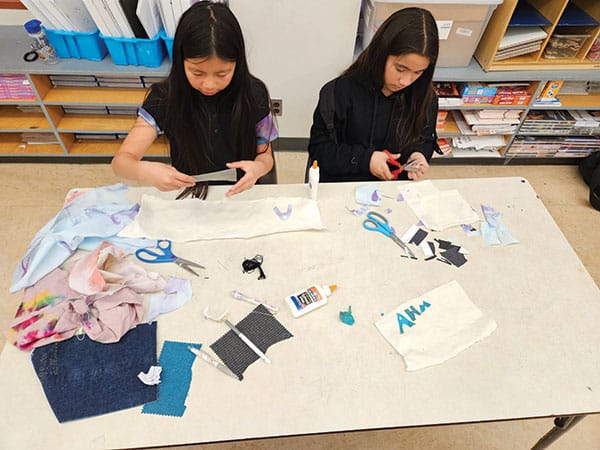
The All San Francisco Committee is proud to honor SCRAP as this year’s recipient of the Ellen Magnin Newman Award.
SCRAP is an arts education nonprofit and creative reuse center that transforms surplus materials into tools for learning, self-expression, and environmental action. Founded in 1976 by arts community leader Anne Marie Theilen and artist Ruth Asawa, SCRAP was born out of a need to supply teaching artists with affordable classroom materials—and has since become a resource for creativity in San Francisco. SCRAP continues to carry forward Ruth Asawa’s vision: a city where art is accessible, waste becomes opportunity, and creativity is a force for equity and connection.
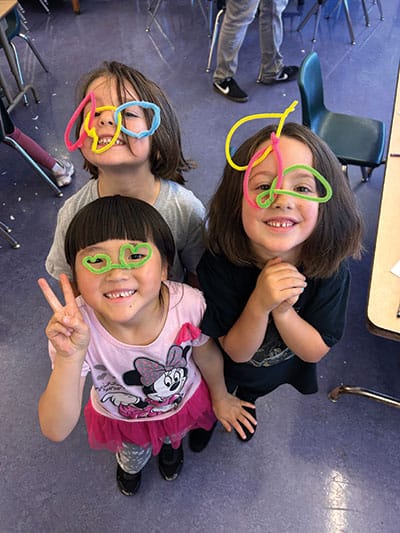
Their depot welcomes more than 37,000 visitors while diverting 250 tons of reusable materials from landfill each year. SCRAP also offers hands-on community workshops, free educator programs, and weekly after-school art and fashion design classes that reach more than 1,000 public school students in Southeast San Francisco.
Learn more at scrap-sf.org.
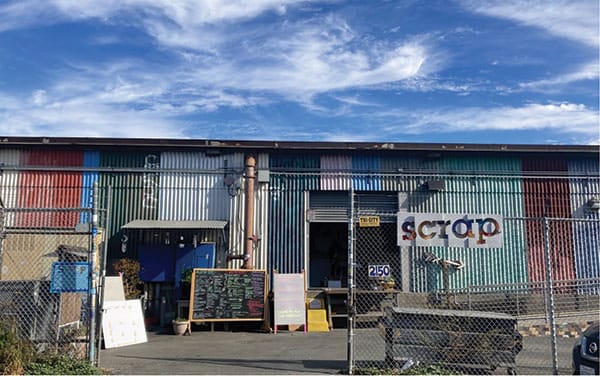
Program Notes
At a Glance
Piotr Ilyich Tchaikovsky’s Piano Concerto No. 1 has the soloist enter with a series of now-iconic chords, but the piece was initially rejected by Tchaikovsky’s intended soloist, who advised him to throw it all out. Instead, the composer stuck with it. The ensuing music interweaves Slavic folk songs and orchestral splendor.
Ottorino Respighi’s Pines of Rome is a vivid postcard from the Eternal City. Look out for its innovative use of a recording to portray a real nightingale.
Short Ride in a Fast Machine
John Adams
Born: February 15, 1947, in Worcester, Massachusetts
Work Composed: 1986
SF Symphony Performances: First—November 1986. Edo de Waart conducted. Most recent—January 2025. Mark Elder conducted.
Instrumentation: 2 flutes, 2 piccolos, 2 oboes (2nd doubling English horn), 4 clarinets, 3 bassoons, contrabassoon, 4 horns, 4 trumpets, 3 trombones, tuba, percussion (woodblocks, pedal bass drum, snare drum, large bass drum, suspended cymbal, sizzle cymbal, large tam-tam, tambourine, triangle, glockenspiel, xylophone, and crotales), 2 synthesizers, and strings
Duration: About 4 minutes
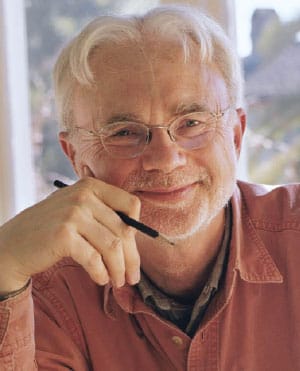
The relationship between the San Francisco Symphony and John Adams spans nearly half a century, beginning in 1979 with his appointment as an adviser on contemporary music. It was in the early years of this collaboration—especially during his tenure as the Symphony’s first composer in residence from 1982 to 1985—that Adams was launched on the path to becoming one of the most influential and widely performed living composers. The residency championed his orchestral voice just as he was beginning to shape it, and also helped pioneer a new model for composer residencies at American orchestras.
Short Ride in a Fast Machine is a compact, adrenaline- charged concert opener, composed the year after Adams’s residency had culminated in the epic Harmonielehre, whose resoundingly successful premiere in 1985—performed in this very hall—marked a decisive breakthrough. Commissioned for the 1986 opening of the Great Woods Center for the Performing Arts—a new outdoor amphitheater in Mansfield, Massachusetts, now known as the Xfinity Center—Short Ride was taken on its inaugural spin by the Pittsburgh Symphony under the baton of none other than Michael Tilson Thomas. Decades later, MTT paired Short Ride with Harmonielehre on a San Francisco Symphony recording (on SFS Media) that won the 2013 Grammy Award for Best Orchestral Performance.
The Music
Short Ride in a Fast Machine should be enjoyed as a boisterously in-your-face, virtuoso roller coaster ride of orchestral sonorities. Adams offered a wry comment on the title when first introducing the piece: “You know how it is when someone asks you to ride in a terrific sports car, and then you wish you hadn’t?”
The immediacy of this music’s impact belies the ingenious craft behind its construction. Short Ride offers a high-voltage snapshot of how Adams minted a powerfully original musical language drawing from the building blocks of minimalism as well as other American styles he had internalized from his early years—all transmogrified by an irrepressibly exuberant imagination.
Like a metronome gone rogue, the woodblock’s steady, insistent pulse collides with overlapping patterns—first in the trumpets—that create thrilling tension and rhythmic dissonance through their simultaneity. The swirling patterns of repeated, tight motifs gain added energy from hints of big-band brass and swing, channeling the presence of Duke Ellington. In the final section, the woodblock suddenly drops out, as if the motor driving the music has finally broken loose—leaving momentum to carry the piece, unhinged, to its breathless conclusion.
Piano Concerto No. 1 in B-flat minor, Opus 23
Piotr Ilyich Tchaikovsky
Born: May 7, 1840, in Kamsko-Votkinsk, Russia
Died: November 6, 1893, in Saint Petersburg, Russia
Work Composed: 1874–75
SF Symphony Performances: First—November 1912. Henry Hadley conducted with Tina Lerner as soloist. Most recent—November 2024. Nicholas Collon conducted with Conrad Tao as soloist.
Instrumentation: solo piano, 2 flutes, 2 oboes, 2 clarinets, 2 bassoons, 4 horns, 2 trumpets, 3 trombones, timpani, and strings
Duration: About 35 minutes
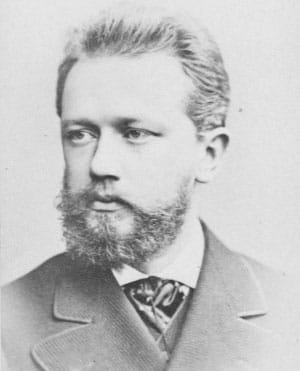
In a deliciously ironic twist of music history, one of Piotr Ilyich Tchaikovsky’s best-loved works received its world premiere not in his Russian homeland, but in Boston—introducing the then-35-year-old composer’s music to the United States for the first time. Even more astonishing is that the now-iconic First Piano Concerto was, at first, flatly rejected by the very virtuoso Tchaikovsky had hoped would bring it to life.
That pianist was Nicolai Rubinstein, one of the most influential musical figures in 19th-century Russia and the cofounding director of the Moscow Conservatory, who had invited the promising young composer to join the faculty at the institution’s inception. Acclaimed as a dazzling virtuoso and piano lion of the era, Rubinstein was an obvious authority to consult, and Tchaikovsky hoped his feedback would lend practical insights and pave the way to a premiere. Instead, he was met with a tirade.
According to Tchaikovsky’s own account, shared a few years later with his patron, Nadezhda von Meck, he visited Rubinstein on Christmas Eve in 1874 to play through the score in an empty classroom at the Conservatory. Tchaikovsky had drafted the concerto in a mere six weeks and had only the orchestration left to complete, which he did by early February 1875. “Worthless, utterly unplayable,” thundered Rubinstein in response to the play-through. At best, he conceded, “two or three pages were worth preserving”; otherwise, the rest “must be thrown away or completely rewritten.”
Tchaikovsky proudly recalled his reply: “I shall not alter a single note; I shall publish the work exactly as it stands!” In reality, he did make some alterations before the premiere and still more for the edition published in 1879. An even later edition, prepared in 1889 but not printed until after the composer’s death, introduced further changes, the authenticity of which remains the subject of spirited debate. Still, it is this final edition that became the standard version of the concerto performed by generations of pianists.
Following Rubinstein’s rejection, Tchaikovsky found a willing advocate in Hans von Bülow, the eminent German pianist and conductor, who embraced the new concerto with enthusiasm. Thus it was that Bülow introduced Tchaikovsky’s First Piano Concerto to the world in the fall of 1875 at the Boston Music Hall, accompanied by a pickup orchestra comprising music students mostly from Harvard (the Boston Symphony would not be founded for another six years). Tchaikovsky himself could not attend the premiere, which proved much more successful than the concerto’s first Russian performance the following month, in Saint Petersburg. Meanwhile, Rubinstein had a change of heart and not only agreed to conduct the Moscow premiere in December but also went on to become one of the work’s early champions in Russia as a soloist.
The Music
A four-note motif, proclaimed with theatrical flair by the horns, sets the stage for the piano’s early, grand entrance. Just how grand that entrance should be is a key point in the debate over authenticity. Tchaikovsky’s original version called for sweeping rolled chords, but the now-standard “hammered” approach of percussive block chords was codified in the posthumous edition. These emphatic chords accompany a passionately soaring melody first presented by the orchestra, which unfolds in a lengthy introduction but is then abandoned, never to be repeated—though aspects of the material return in subtler ways later in the work.
The “real” first theme of the opening movement slips in furtively, like a change of scene, and was adapted from a Ukrainian tune Tchaikovsky reportedly heard whistled by a beggar in the marketplace. This is the first of several folk elements Tchaikovsky weaves into the concerto—a strategy that has a parallel in the way composers like John Adams recast vernacular references within classical contexts. A poetic, delicately lyrical second theme initially resembles a dreamy reverie but is transformed in the course of the movement. The long solo cadenza toward the end emerges as a play within a play—a microcosm of the piano’s far-ranging personality in the concerto.
The ensuing Andantino semplice fuses the calming lyricism of a traditional slow movement with a playful, scherzo-like interlude—a whirring detour that bursts in at the center. Ignited by a catchy, folk-tinged theme of fiery spirit, the finale once again taps into Ukrainian song, this time one associated with spring. A lyrical second theme enters modestly, but at the culmination of the movement it is magnified into a moment of neon-bright splendor—a transformation that recalls the grandeur of the lush, soaring melody heard at the very start of the concerto.
Pines of Rome
Ottorino Respighi
Born: July 9, 1879, in Bologna, Italy
Died: April 18, 1936, in Rome
Work Composed: 1923–24.
SF Symphony Performances: First—October 1926. Alfred Hertz conducted. Most recent—May 2025. Giancarlo Guerrero conducted.
Instrumentation: 3 flutes (3rd doubling piccolo), 2 oboes, English horn, 2 clarinets, bass clarinet, 2 bassoons, contrabassoon, 4 horns, 3 trumpets, 3 trombones, tuba, 6 offstage Roman buccine (2 trumpets and 4 trombones), timpani, percussion (triangle, cymbals, tam-tam, bells, tambourine, ratchet, and bass drum), harp, celesta, piano, organ, recorded birdsong (nightingale), and strings
Duration: About 23 minutes
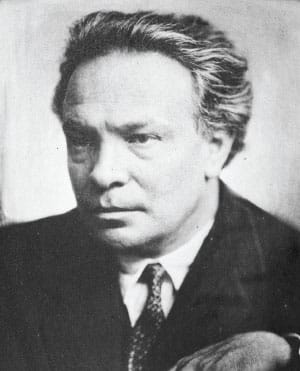
Although he came of age in Bologna, Ottorino Respighi spent his formative years abroad. He arrived in Russia in 1900, seven years after Tchaikovsky’s untimely death, to take up a post as violist with the orchestra of the Russian Imperial Theatres in Saint Petersburg. It was during this impressionable period that he came under the influence of Nicolai Rimsky-Korsakov. A brief period of study in Berlin followed, deepening the itinerant Italian’s understanding of structure and symphonic form.
Respighi studied with Rimsky-Korsakov privately, later recalling “a few, but for me very important, lessons in orchestration.” The influence was profound. The Russian’s principles of vivid instrumental color, the bold use of contrasts, and the establishment of fantastical atmospheres found a lasting home in Respighi’s imagination. Nowhere is this legacy more amply on display than in his brilliant Roman soundscapes.
Resettling in Rome in 1913, Respighi accepted a position as professor of composition at the storied Accademia Nazionale di Santa Cecilia. Its resident orchestra had been founded just five years earlier, becoming the first Italian ensemble to focus exclusively on symphonic repertoire, and it was the Orchestra dell’Accademia Nazionale di Santa Cecilia that gave the world premiere of Pines of Rome (Pini di Roma). Though opera had become the traditional domain for Italian composers, Respighi’s enduring reputation rests on his symphonic works—above all Pines of Rome, which remains the best-known work from his prolific output.
Composed between 1923 and 1924, Pines of Rome stands at the center of a triptych of symphonic poems inspired by various facets of the Eternal City, from its natural beauty and ancient grandeur to its vibrant popular traditions—with a particular focus on its classical past and mythic lore. Its composition followed that of Fountains of Rome (Fontane di Roma), the work that first brought Respighi international acclaim, which was completed in 1916. Later, in 1928, came Roman Festivals (Feste Romane).
The Music
For Pines of Rome, Respighi turned to the unifying image of Rome’s signature umbrella pine trees. Like its companion works, it unfolds in four sections, evoking the shape of a symphony, but the effect is closer to a series of cinematic tableaux than to traditional symphonic architecture.
The first movement depicts the innocent play of children in the pine grove of the lavish Villa Borghese gardens, which Cardinal Scipione Borghese had laid out on the grounds of former vineyards. The children, as Respighi wrote in his commentary on the work, dance “the Italian version of ‘Ring around-a-rosy,’ mimic marching soldiers and battles, and twitter and shriek like swallows at evening, coming and going in swarms.”
A scene change whisks the listener to a dark, shadowy soundscape, where pines stand sentinel over the entrance of a catacomb. “From the depths rises a chant that echoes solemnly, sonorously, like a hymn, and is then mysteriously silenced,” Respighi wrote. His command of orchestral color is combined with an unerring sense for structuring a climax.
The Janiculum Hill, located just outside the boundaries of ancient Rome, offers sweeping views over the city. Its pines inspire a nocturne of hushed lyricism, featuring a solo clarinet, a glowing piano cadenza, and—most striking of all—the singing of a nightingale. In a remarkable innovation without precedent in the concert hall, Respighi calls for a phonograph recording of an actual nightingale’s song to be played alongside the live orchestra—an early and poetic anticipation of multimedia in the concert hall.
Set to a stirring martial tempo, the final movement is devoted to the “Pines of the Appian Way” and leads from the full moon imagined in the previous movement to a “misty dawn” over the “tragic country,” where soldier-like solitary pines guard the grand military avenue that symbolized and ensured Roman power. “Indistinctly, incessantly, the rhythm of unending steps,” as the composer put it. “The poet has a fantastic vision of past glories. Trumpets blare, and the army of the Consul bursts forth in the grandeur of a newly risen sun toward the Sacred Way, mounting the Capitoline Hill in triumph.”
—Thomas May
About the Artists
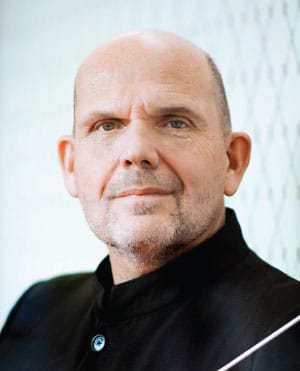
Jaap van Zweden
Jaap van Zweden is music director of the Seoul Philharmonic and music director designate of Orchestre Philharmonique de Radio France. Among his past music directorships are the New York Philharmonic, where his tenure included 31 premieres and the reopening of David Geffen Hall, and the Hong Kong Philharmonic, which was named Gramophone’s Orchestra of the Year under his leadership. He has conducted the Vienna Philharmonic, Berlin Philharmonic, Leipzig Gewandhaus, Berlin Staatskapelle, London Symphony, Boston Symphony, Cleveland Orchestra, Chicago Symphony, Philadelphia Orchestra, and Los Angeles Philharmonic, among many others. He made his San Francisco Symphony debut in October 2012 and will lead the Orchestra in a three-season cycle of Beethoven’s nine symphonies beginning in February 2026.
This season, van Zweden undertakes European and Asian tours with Orchestre Philharmonique de Radio France and rejoins the Royal Concertgebouw Orchestra, Tonhalle Orchestra Zurich, and Antwerp Symphony, where he is conductor emeritus. In the United States, he returns to the Chicago Symphony and leads his first US tour with the Seoul Philharmonic. In Asia, he returns to the NHK Symphony Orchestra and the Hong Kong Philharmonic.
Van Zweden’s discography includes acclaimed releases on Decca Gold and Naxos. With the New York Philharmonic, he recorded David Lang’s prisoner of the state and Julia Wolfe’s Grammy-nominated Fire in my mouth. With the Hong Kong Philharmonic, he conducted the first full Ring cycle ever staged in Hong Kong, and his performance of Parsifal received the 2012 Edison Award for Best Opera Recording.
Born in Amsterdam, van Zweden was appointed the youngest-ever concertmaster of the Royal Concertgebouw Orchestra at age 19, and began his conducting career in 1996. A winner of the Concertgebouw Prize and Musical America’s 2012 Conductor of the Year, he founded the Papageno Foundation with his wife, supporting young people with autism through music, housing, research, and innovation.
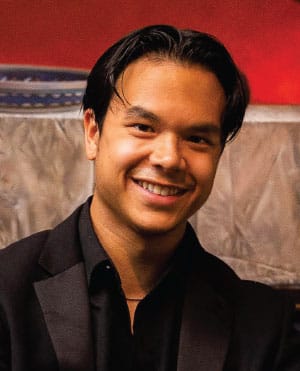
Parker Van Ostrand
Parker Van Ostrand performed last season with the San Diego Symphony, Sacramento Philharmonic, Symphony Parnassus, and Evansville Philharmonic. Previous highlights include performances with the Fort Worth Symphony, Camellia Symphony, South Arkansas Symphony, Shreveport Symphony, and the San Francisco Conservatory of Music Orchestra as winner of their 2023 Concerto Competition. This past summer, he performed at the opening of the Michael Milken Institute in Washington, DC, and has upcoming performances with the San Diego Symphony at the Rady Shell, Auburn Symphony, and a tour to Japan with the California Youth Symphony. He makes his San Francisco Symphony debut with this performance.
Van Ostrand was also a winner of the 2023 PianoTexas Academy Concerto Competition and received the Gold Medal in the 71st Wideman International Piano Competition. In November 2022, he collaborated with Yuja Wang in a two-piano performance at the SFCM Gala. That summer, he toured with the California Youth Symphony across Central Europe. In 2020, he won third place and the Best Sonata Award at the 10th National Chopin Piano Competition.
Born in Sacramento, California, Van Ostrand is a student of Yoshikazu Nagai and Garrick Ohlsson at the San Francisco Conservatory of Music, and has also been mentored by Michael Tilson Thomas since 2023. His previous teachers include Sarah Chan, Natsuki Fukasawa, Linda Nakagawa, and Jon Nakamatsu.

